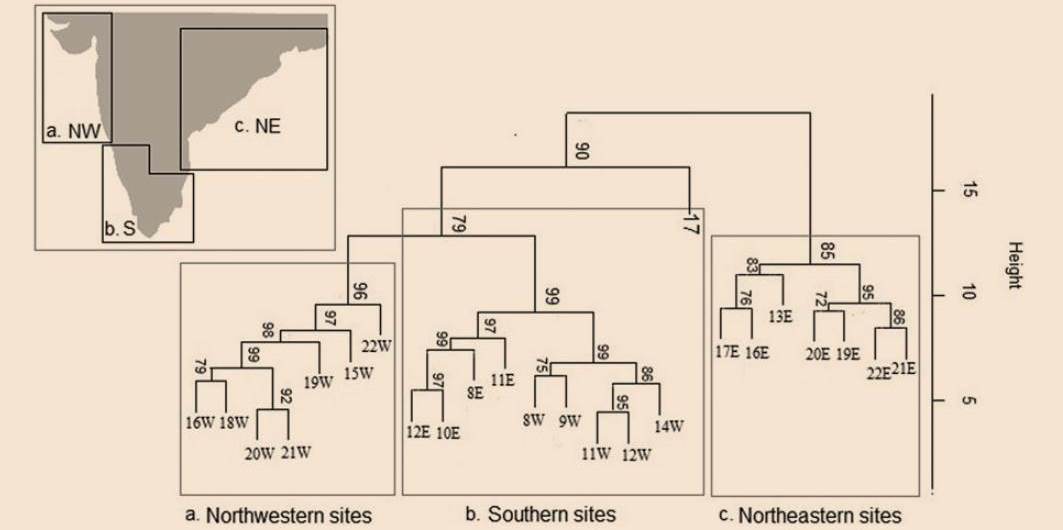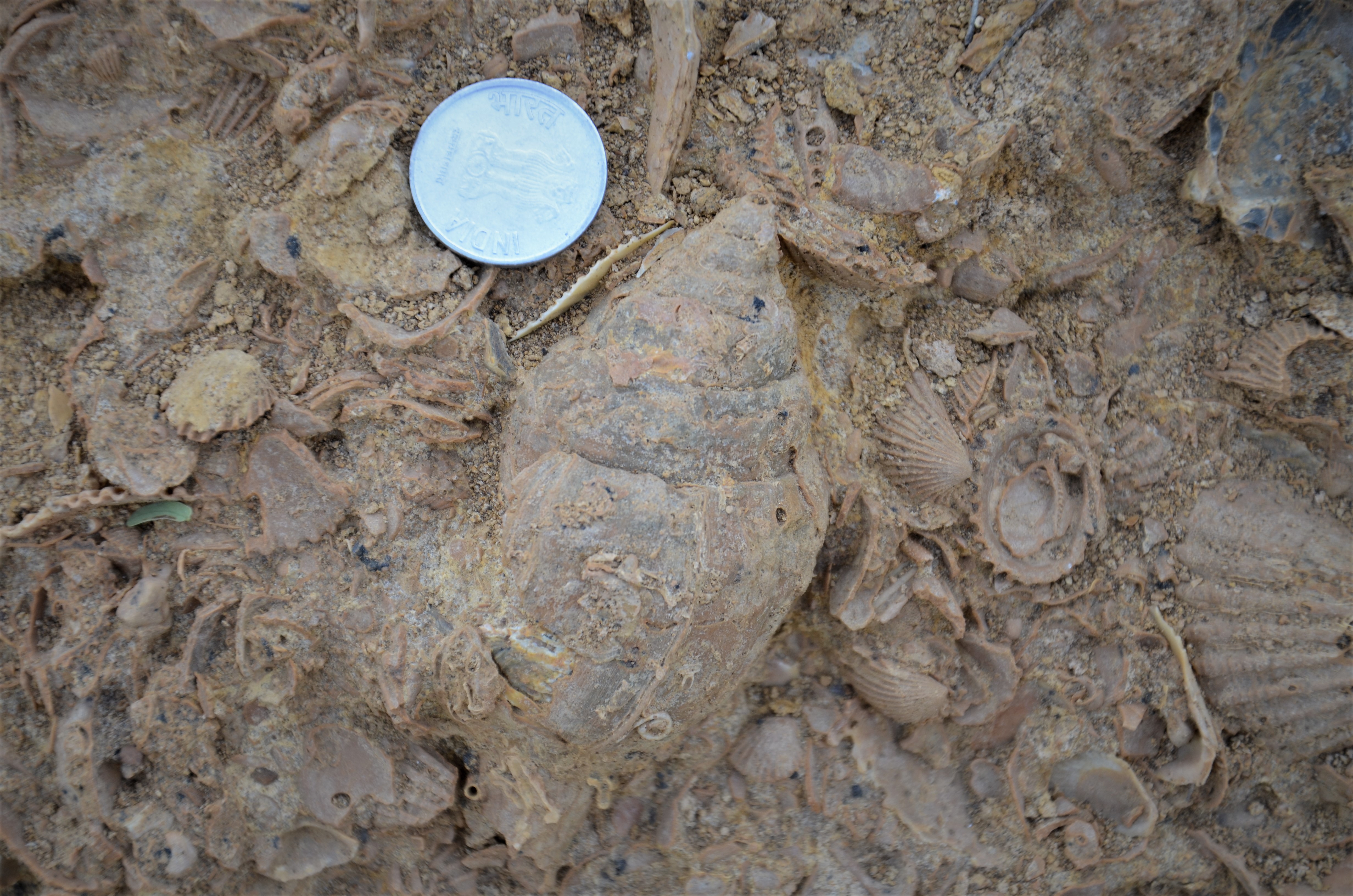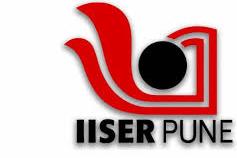Oligo-Miocene fauna of western India and its relationship to regional events
 The marine fauna of western India, especially the Kutch Basin, witnessed several important events in Neogene, including the closure of the Tethyan seaway and the development of monsoon.
Using trace elements and stable isotope composition of calcitic shells of marine bivalves, we attempt to evaluate changes in the regional environment.
We also study the response of this tropical marine community to such changes through time.
[For more see Dutta et al, 2020,
Dutta and Chattopadhyay, 2022,
Chattopadhyay et al, 2024,
Venu Gopal et al, 2025]
The marine fauna of western India, especially the Kutch Basin, witnessed several important events in Neogene, including the closure of the Tethyan seaway and the development of monsoon.
Using trace elements and stable isotope composition of calcitic shells of marine bivalves, we attempt to evaluate changes in the regional environment.
We also study the response of this tropical marine community to such changes through time.
[For more see Dutta et al, 2020,
Dutta and Chattopadhyay, 2022,
Chattopadhyay et al, 2024,
Venu Gopal et al, 2025]
Molluscan distribution along the Indian coast and its drivers
 Tropical coastal areas are one of the most diverse ecosystems in the world. However, quite a few coasts have yet to be studied for their macro-benthic diversity.
The Indian coastline presents one such gap area.
Two sub-parallel coastlines of India have a wide latitudinal span (8 to 23N) and strikingly different physiographic environments.
While the east coast receives a high siliciclastic input from extensive river systems flowing to the Bay of Bengal with fluctuating salinity, the west coast has a large shelf area and high productivity of the Arabian Sea.
Such difference enables us to evaluate the effect of regional
environmental parameters on marine molluscan diversity and distribution in an intra-tropical setting.
We use species distribution of marine bivalves, compiled using available literature and field collection, to address this question.
[For more see
Sarkar et al, 2019,
Chattopadhyay et al, 2021]
Tropical coastal areas are one of the most diverse ecosystems in the world. However, quite a few coasts have yet to be studied for their macro-benthic diversity.
The Indian coastline presents one such gap area.
Two sub-parallel coastlines of India have a wide latitudinal span (8 to 23N) and strikingly different physiographic environments.
While the east coast receives a high siliciclastic input from extensive river systems flowing to the Bay of Bengal with fluctuating salinity, the west coast has a large shelf area and high productivity of the Arabian Sea.
Such difference enables us to evaluate the effect of regional
environmental parameters on marine molluscan diversity and distribution in an intra-tropical setting.
We use species distribution of marine bivalves, compiled using available literature and field collection, to address this question.
[For more see
Sarkar et al, 2019,
Chattopadhyay et al, 2021]
Predator-prey dynamics of the past
 Biotic interactions, especially predation, have drawn considerable attention in recent times as an important agent of natural selection.
The fossil record of drilling and shell-crushing predation is unique where evidence of predation is preserved.
Drilling predation is often used as a model system by paleobiologists to evaluate evolutionary and ecological effects of such predatory interaction on the composition of molluscan communities.
Using drilling frequencies, it is possible to test quantitatively specific predictions regarding predatory behavior and prey response in deep time.
We use experimental data, ecological observation and paleoecological proxies to test such predictions in molluscan community.
[For more see Chattopadhyay et al, 2014,
Klompmaker et al, 2019,
Chattopadhyay et al, 2020]
Biotic interactions, especially predation, have drawn considerable attention in recent times as an important agent of natural selection.
The fossil record of drilling and shell-crushing predation is unique where evidence of predation is preserved.
Drilling predation is often used as a model system by paleobiologists to evaluate evolutionary and ecological effects of such predatory interaction on the composition of molluscan communities.
Using drilling frequencies, it is possible to test quantitatively specific predictions regarding predatory behavior and prey response in deep time.
We use experimental data, ecological observation and paleoecological proxies to test such predictions in molluscan community.
[For more see Chattopadhyay et al, 2014,
Klompmaker et al, 2019,
Chattopadhyay et al, 2020]
Reliability of paleontological data
 Fossils provide an essential record of how life on Earth has evolved. However, the fossil record is incomplete, primarily because the dead remains have to endure the vagaries of nature to emerge as a fossil. Natural processes leading to fossilization often create biases that impact the record.
Apart from these, anthropogenic influences determine the fate of the fossils after their discovery and play a significant role in our ability to use them meaningfully to reconstruct past biodiversity. We try to understand such influences affecting the inferences drawn from the fossil record.
[For more see Chattopadhyay et al, 2013,
Bhattacherjee et al, 2021,
Raja et al, 2022,
Dunne et al, 2025]
Fossils provide an essential record of how life on Earth has evolved. However, the fossil record is incomplete, primarily because the dead remains have to endure the vagaries of nature to emerge as a fossil. Natural processes leading to fossilization often create biases that impact the record.
Apart from these, anthropogenic influences determine the fate of the fossils after their discovery and play a significant role in our ability to use them meaningfully to reconstruct past biodiversity. We try to understand such influences affecting the inferences drawn from the fossil record.
[For more see Chattopadhyay et al, 2013,
Bhattacherjee et al, 2021,
Raja et al, 2022,
Dunne et al, 2025]


